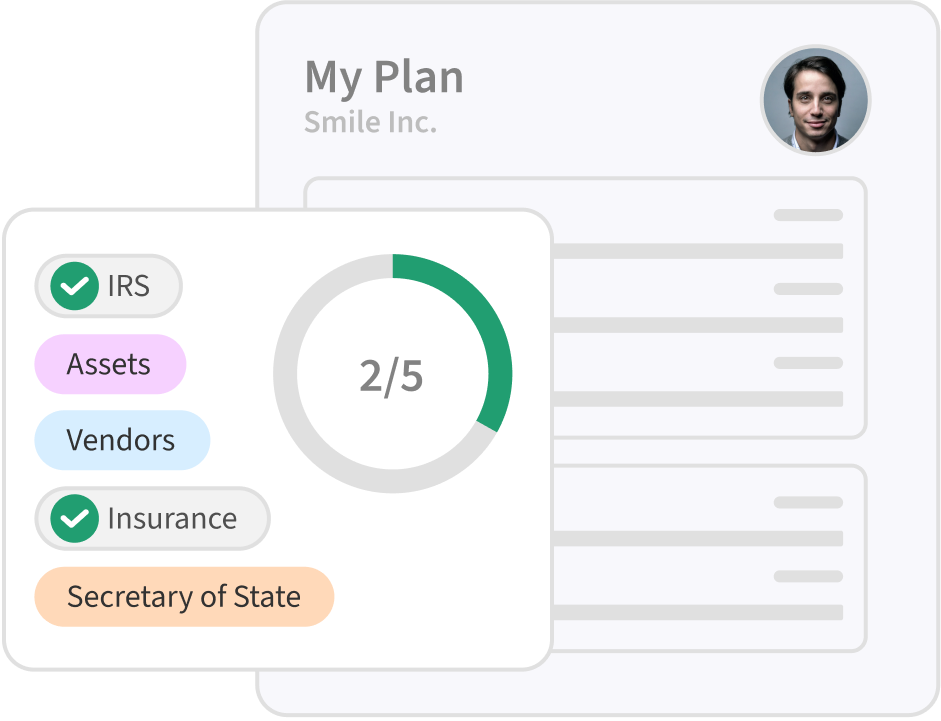Creating a successful startup needs more than just a groundbreaking idea; it requires a solid foundation in the form of an efficient startup business model. In our dynamic and quickly evolving digital era, understanding and choosing the right company model — whether it's B2B, B2C, subscription-based, or freemium — is critical. However, even the best plans can encounter inefficiencies.
In this blog, we'll dive into how to identify these inefficiencies in startup business models and, more importantly, how to rectify them to ensure sustainable growth and success in competitive landscapes.
What Are Business Models?
A business model is a startup's plan to make money and run successfully. It includes what the startup offers, its customers, how it sells its products or services, how it makes money, and its overall strategy to stay competitive and keep growing.
A closely related term to business model is business efficiency.
What is Business Efficiency?
If a business model is a startup’s blueprint on how it plans to make money and achieve success, then business efficiency is analyzing how well the business utilizes its resources to achieve those goals over a period of time.
More specifically, it refers to how well a startup company uses its resources (like time, money, and employees) to achieve its milestones. It focuses on optimizing processes, reducing costs, maximizing revenue, improving customer satisfaction, and achieving sustainable growth. You could view it as an internal company audit mechanism.
In a nutshell, rectifying workplace inefficiencies can be considered a prerequisite to fixing inefficient business models. Now, to fix bad business models, you need to know the different types along with real-world examples first.
The Different Types of Business Models for Startups
A quick Google search for the best business model for startups brings up different answers and explanations. That’s because there are multiple ways of categorizing business models depending on the context. One way to look at it is from the target-market perspective, in which case there are four main categories:
B2B (Business-to-Business): In this model, businesses mainly sell their product/services to other businesses. Take Salesforce, for example, which provides customer relationship management (CRM) solutions exclusively to other businesses. Another example is Microsoft Azure and Office 365.
B2C (Business-to-Consumer): Here, businesses sell directly to individual consumers. This is the most common business model. For instance, Amazon sells a wide range of products to consumers online, and Starbucks services coffee and food directly to people who walk into their cafes.
C2B (Consumer-to-Business): In C2B, people sell products or services to businesses. A typical example includes freelance graphic designers who create and sell logos to companies for a fee. Or platforms like 99designs, where designers and artists sell their work to businesses via winning contests or direct hires.
C2C (Consumer-to-Consumer): Consumers directly sell to other consumers, usually via third-party platforms. Think Depop, a marketplace that allows members to buy and sell clothing, and Turo, a car-sharing platform where users can rent out their vehicles to other users.
B2B2C (Business-to-Business-to-Consumer): The B2B2C model (a combination of B2B and B2C models) involves a business selling to another business which, in turn, sells to the end customer. It allows two businesses to combine their strengths and offer a more complete product or service. For example, a fintech startup creates a budgeting software that an allied bank integrates into its mobile app, allowing the bank's customers to manage their finances more easily.
Another way to look at and understand startup business models is from a revenue generation and operational strategy perspective. Six of the most common types include:
Direct Sales
This model involves selling products or services directly to customers without an intermediary. Take Shopify, for example, a platform that allows businesses of all sizes to create online stores and sell products directly to consumers.
Freemium
Under the freemium model, a product or service's basic version is free, but users must purchase more advanced features or services, i.e., at a premium. LinkedIn is a common example – it's a free professional networking platform, but you must pay to access additional features.
Subscription
This model charges customers a recurring fee (monthly, quarterly, bi-annually, or annually) to access a product or service. It's widely used in media (streaming services like Netflix), software (SaaS platforms like MailChimp), and even physical goods (subscription boxes).
Advertising
In this model, startup businesses provide content or services for free and make money through advertisements. This is common in online media platforms like Facebook, where companies pay to display their ads to the platform’s audience.
E-Commerce
E-commerce involves selling goods or services online through the startup's website or an online marketplace. Recently, eCommerce has seen a sharp rise in popularity because it offers a broad market reach and convenience for startups and customers. An example is Shopify, which lets users set up online stores and sell products directly to consumers.
Marketplace
By creating your own marketplace, you facilitate transactions between buyers and sellers and earn a commission on each sale. Etsy provides an online marketplace that lets artisans market and sell their handmade or vintage items to interested buyers.
To sum it up, the first perspective focuses on who the startup business is targeting (B2B, B2C, C2B, and C2C), whereas the second focuses on how it makes money and operates (freemium, direct sales, subscriptions, advertising, e-com, and marketplace).
How to Fix Ineffective Startup Business Models
Analyze Your Market Thoroughly
Look closely at what's happening in your industry – who are your top competitors? What are they doing that's different? What do your customers really want? Doing so helps set a benchmark and better understand market gaps and opportunities.
At the same time, keep an eye on emerging online trends that might affect your business, like tech changes (that can give you a competitive edge) and popular social media trends.
Example: You run a startup whose primary offering is an online tutoring app. Start by researching other popular apps on every platform to check what subjects they offer, their pricing, and their customer reviews. Also, keep track of educational trends (like changes in how subjects are taught) and tech upgrades.
Double Down on Customer Engagement and Feedback
The importance of engaging customers and soliciting feedback can hardly be overstated. It helps you understand what they like or don’t like about your offerings. You can gather this information by asking users to participate in surveys (and provide perks in exchange) or via direct communication through your platform or email.
Example: Let's say you have a fitness app. Regularly ask users for feedback through in-app surveys or social media polls. Find out what workouts they enjoy, what features they find most valuable, and what new content they want to see.
Improve Resource Allocation
Ensure you're using your budget, time, and team most effectively. Instead of allocating your resources across multiple projects and spreading yourself thin, you should focus more on developing key features of your app or website that attract more users.
Example: Your startup offers a project management tool. Upon closer inspection, you discover that it might be better to invest in user-friendly design and core features to get better results instead of heavily spending on online ad campaigns. Achieving such optimizations often requires patience and plenty of trial and error.
Leverage Data Analytics
Today, plenty of free and paid software tools help analyze data from your website or app (Google Search Console, for example). This data provides valuable insights into user behavior, including what features they use, when they log in, how long they stay, etc. Once you access this knowledge, you can make informed decisions to improve your overall business.
Example: Your startup created and manages an online language learning platform (similar to Coursera or Udemy). Using such software, you can know which languages are most popular, the average time users spend on each lesson, and which exercises are the most effective. As a result, you know which areas to focus your efforts on to improve user experience.
Pivot if Necessary
Be open to the idea of change – even significant change – If your current model isn’t helping you achieve the success you hoped for. This could mean changing your main product, targeting a different audience, or changing your business model entirely!
Example: Your startup founded a platform to assist graphic designers in finding freelance gigs but later discovered that most users are interested in landing full-time jobs. To survive, you hit the drawing board, make the necessary pivots, and now focus on job listings and career resources instead of freelance projects.
Get your free founder's guide to shutting down

A comprehensive breakdown of how founders can quickly and easily execute a fully compliant shutdown
Conclusion
To conclude, identifying ineffective startup business models and taking action to rectify them might be the only way to save your company.
But that's not always the case. Sometimes, a startup goes beyond the point of no return – where every additional resource pumped into the company fails to improve the situation.
It takes courage and a fair bit of honesty to admit that now is the best time to shut down. In that regard, SimpleClosure is just the partner you need.
We help startups shut down legally for much cheaper and faster than the industry average. Till now, we've helped dozens of startup businesses close peacefully and their founders move onto the next exciting chapter of their lives, and we would love to do the same for you - let's talk today.


